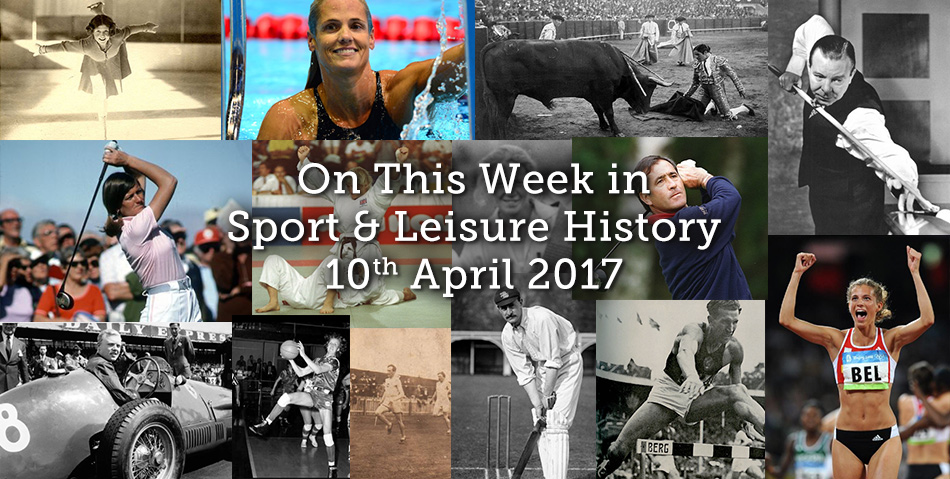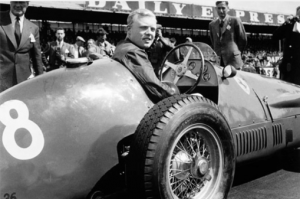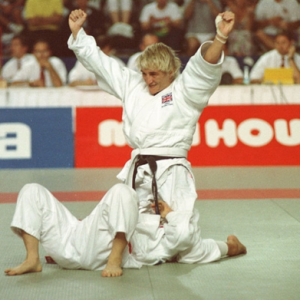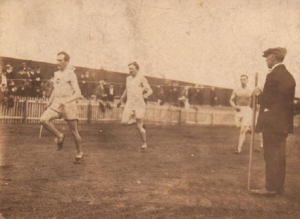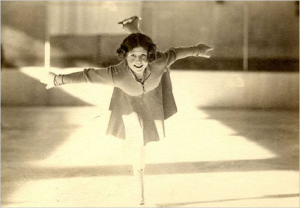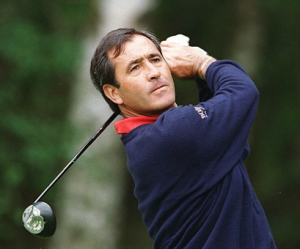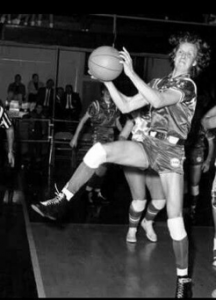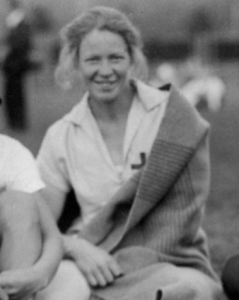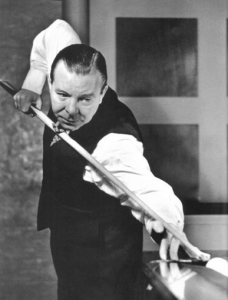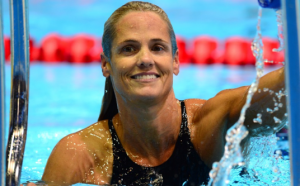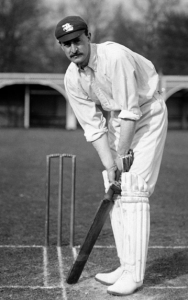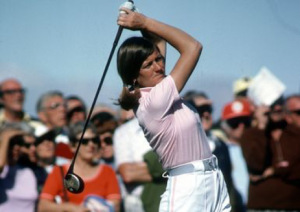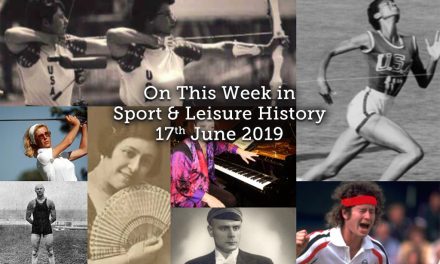10th – John Joseph “Johnny” Hayes, American athlete and winner of the 1908 Olympic marathon was born today in 1886. Hayes’ Olympic victory contributed to the early growth of long-distance running and marathoning in the United States. He was also the first man to win a marathon at the now official standard distance of 26 miles 385 yards when Olympic officials lengthened the distance to put the finish line in front of the King of England’s box. (The 1896 and 1904 Olympic marathons were less than 25 miles.) Footballer, with a reputation for aggressive play regarded as one of the “hard men” of English football – Frank Barson was born in 1891. He played for several English football clubs including Barnsley, Manchester United, Aston Villa and Watford. Born in Sheffield he began his career working as a blacksmith and playing for amateur clubs Albion FC and Cammell Laird’s, before joining Barnsley Football Club in 1911. He transferred to Aston Villa in 1919, with whom he won the FA Cup in 1920, and to Manchester United in 1922, with a transfer fee of £5000. The Times once noting that “On frequent occasions Barson was escorted out of grounds by policemen to protect him from groups of angry opposition fans.” Opposing crowds loathed him, forcing him to publicly defend himself on the grounds that he had been “brought up to play hard and saw nothing wrong with an honest to goodness shoulder charge.” One violent challenge in a match against Fulham resulted in a seven-month ban. In May 1932 he became the player-manager of Rhyl, where he remained until his contract was terminated in March 1935. Within three months he re-surfaced as the manager of Stourbridge but an offer to return to Aston Villa as youth coach in July 1935 meant he gave up the job as soon as a replacement was found. Three months after his appointment as youth coach, he became the senior coach and head trainer at Villa Park until the outbreak of the Second World War. He became the trainer at Swansea Town from June 1947 until February 1954 and he finished his career in May 1956 after previously spending almost two seasons as the trainer at Lye Town. Barston died on 13 September 1968 at Winson Green, Birmingham, at the age of 77. On this day in 1896 Spiridon Louis, a 24 year-old Greek shepherd became the hero of the Games when became the 1st Olympic marathon title holder. This was the event the Greek hosts wanted to win more than any other due to its great historical significance. Today in 1924, the USGA finally legalized tubular steel golf-club shafts, although the R&A continued to ban them until the Prince of Wales used a set at St Andrews in 1929 which helped force a rule change. The first steel shafts were allowed in the US Open, they were allowed in putters only, the winner, Cyril Walker, used one. The RMS Titanic set sail on this day in 1912, from Southampton, on her maiden and only voyage. In 1916 the Professional Golfers’ Association of America (PGA) was created in New York City. The first British world motor-racing champion Mike Hawthorn was born in 1929, less than 6 months after winning the title, in 1958; he was killed in a car crash in Surrey. Stan Mellor, the former champion National Hunt jockey, was born in 1937. Champion Jockey three times between 1960 and 1962, he was the first man to ride 1000 winners under National Hunt rules. Surprisingly, he never won the Grand National, Cheltenham Cup or Champion Hurdle. Gloria Hunniford, British radio and television host, was born on this day in 1940. British sprinter Linford Christie was born in 1960. Linford achieved his ultimate goal of winning the Olympic 100m title at Barcelona in 1992. Olivia Borlée, Belgian sprinter, was born on this day in 1986. She won a bronze medal in 4x100m relay at the 2007 World Championships, together with teammates Hanna Mariën, Élodie Ouédraogo and Kim Gevaert. With 42.75 seconds the team set a new Belgian record. Borlée represented Belgium at the 2008 Olympics in Beijing. She competed as part of the 4x100m relay together with Gevaert, Mariën and Ouédraogo. In their first round heat they were placed first in front of Great Britain, Brazil and Nigeria. Their time of 42.92 seconds was the third time overall out of the sixteen participating nations, which qualified them for the final in which they sprinted to a time of 42.54 seconds and silver behind Russia but in front of Nigeria, missing out on the gold medal with 0.23 seconds. However, one of the Russian runners was later found to have used performance-enhancing drugs resulting in the Russians being disqualified thereby promoting Belgium to the gold medal, which was awarded eight years later on September 10, 2016. Borlée represented Belgium at the 2016 Olympics in Rio de Janeiro, competing in the 200m where she finished 7th in her heat with a time of 23.53 seconds, but not qualifying for the semi-finals. She was the flag bearer for Belgium during the Parade of Nations. Olivia Borlée’s brothers Jonathan Kevin and Dylan are also athletes. Coached by their father, Jacques Borlée, they ran to the 4th place in the 2016 Olympic 4x400m relay final. In 1989 Nick Faldo won his second US Masters title, beating Scott Hoch in a play-off at the second extra hole. Paul McCartney announced that he was to leave The Beatles for personal and professional reasons on this day in 1970. The People’s Republic of China hosted the USA table tennis team for a week-long visit starting today in 1971. This so called “ping-pong diplomacy” was an attempt to thaw relations with the United States. American born Spanish swimmer Martin Zubero swan a then world record time for 200m backstroke of 1:52.51 in 1991. The East German long-jumper Angela Voigt, (née Schmalfeld) died on this day in 2013 aged 61 following a short, severe illness. Voigt was born in Weferlingen, in what was then East Germany, on 18 May 1951. She was originally a pentathlete, and finished third and second at the East German championships in 1972 and 1973. Because of injuries she eventually concentrated on just the long-jump. She finished fourth at the 1974 European Championships. Voigt set a long-jump world record of 6.92m at Dresden in May 1976 but it was broken ten days later by Siegrun Siegl. At the 1976 Montreal Olympics Siegl finished fourth while Voigt won the gold with a leap of 6.72m. Kathy McMillan, who eventually finished second, had a longer jump which was deemed a foul. At the 1978 European Championships Voigt won a silver medal, having given birth to a son the previous year. 6.92m remained her career best jump. In 2005 Australia defeated Indian by 98 runs in the Cricket Women’s World Cup. Following a concert in Rio de Janeiro in 2011, the band U2’s tour, ‘360 Degrees’, becomes the highest grossing musical tour of all time. Online pre-orders began for the Apple Watch today in 2015, initially planned for sale on April 24th; however, the volume of orders pushed delivery dates into June/July. Richard “Richie” Benaud, died on this day in 2015, an Australian cricketer who, after his retirement from international cricket in 1964, became a highly regarded commentator. Benaud was a Test Cricket all-rounder, blending leg spin bowling with lower-order batting aggression. Along with fellow bowling all-rounder Alan Davidson, he helped restore Australia to the top of world cricket in the late 1950s and early 1960s after a slump in the early 1950s. In 1958 he became Australia’s Test captain until his retirement in 1964. He became the first player to reach 200 wickets and 2,000 runs in Test cricket, arriving at that milestone in 1963. Gideon Haigh described him as “perhaps the most influential cricketer and cricket personality since the Second World War.” In his review of Benaud’s autobiography Anything But, Sri Lankan cricket writer Harold de Andrado wrote: “Richie Benaud possibly next to Sir Don Bradman has been one of the greatest cricketing personalities as player, researcher, writer, critic, author, organiser, adviser and student of the game.” The 80th playing of the US Masters was won by England’s Danny Willett in 2016, shooting a five-under 283.
- Mike Hawthorn
- Olivia Borlée
11th – Today in 1913 the cricket pavilion of the Nevill Cricket Ground in Tunbridge Wells was burnt down by militant suffragettes due to Kent having a policy of no-admittance to women. The fire was started in the dressing rooms with the perpetrator setting fire to the cricket nets, the fire was discovered by a passing lamplighter. The fire brigade extinguished the fire within an hour but too late to save the pavilion. In front of the remains of the pavilion, firemen found suffragette literature, an electric lantern and a picture of Emmeline Pankhurst. The fire also destroyed photographs of the first Canterbury Cricket Week and the Bluemantle Cricket Club’s archives. The attack may have been provoked by a comment from an unknown Kent official who is reported to have said “It is not true that women are banned from the pavilion. Who do you think makes the teas?” There was an angry reaction to the attack locally and nationally. The National League for Opposing Woman Suffrage held a meeting in the town with Sir Arthur Conan Doyle attending, where he called the suffragettes “female hooligans” and compared the attack to “blowing up a blind man and his dog” A new pavilion was built using the original designs after a series of fund raising concerts at the Opera House at a cost of £1,200. Construction was finished in 9 weeks, being completed hours before Kent were due to play at the Tunbridge Wells Cricket Week in July 1913. Nevill Ground was the only cricket ground to be attacked by suffragettes. Yuriy Lituyev, Russian 400m hurdler was born today in 1925. He trained in Leningrad and later in Moscow at the Armed Forces sports society. Lituyev took part in WWII, where he was a battery commander. He competed for the USSR in the 1952 Helsinki Olympics where he won the 400m silver. He also represented his country at the European Championships, winning 1 gold and 2 silvers. He held both European and world records at 400m hurdles during the 1950s. Welsh former rugby union and rugby league player and dual-code international, Lewis Jones, was born today in 1931. He won nine caps for Wales at fullback, centre and wing before turning professional and playing rugby league for Leeds and Great Britain. Rugby league historian Robert Gate has described Lewis Jones as “arguably the most devastating attacking back Wales has ever produced.” His acceleration over the first few yards allowed him to penetrate almost any defence in the mid-1950s. Jones’ Testimonial match at Leeds took place in 1963. He was the first Leeds player to score over 1,000 goals for the club, a feat not matched until 2009 Kevin Sinfield. Jones became one of fewer than ten Welshmen to have scored more than 2,000 points in their rugby league career. Jones won 15 caps for Great Britain at rugby league, scoring in every game he played. He spent six years as a player-coach in Australia. A schoolteacher by profession, he later taught mathematics in Leeds. Arriva Yorkshire honoured thirteen rugby league footballers on Thursday 20 August 2009, at a ceremony at Wheldon Road, the home of Castleford. A fleet of new buses were named after the ‘Arriva Yorkshire Rugby League Dream Team’, which included Jones. Members of the public nominated the best ever rugby league footballers to have played in West Yorkshire, supported by local rugby league journalists; James Deighton from BBC Leeds, and Tim Butcher, editor of Rugby League World. In 2013 Jones was inducted into the Rugby League Hall of Fame. On this day in 1955 Sobers started his run of 85 uninterrupted Test Cricket appertains for the West Indies. One of Britain’s leading female judo exponents Karen Briggs, was born in 1963. She has won numerous World and European Championship medals, and represented Great Britain in the 1992 Olympics, the first year Women’s Judo was included as an Olympic sport (first as a demonstration event in 1988) and was placed fifth after suffering a dislocated shoulder. She also won four World championships in the 1980s and grabbed gold at judo’s appearance in the Commonwealth Games in 1990. Since retiring from competition she now runs judo classes at 26 schools in East Yorkshire and coaches at a regional centre of excellence alongside her husband Peter Inman, also a former England international. In August 2015 Dr Karen Briggs was inducted into the IJF hall of fame. The 30th instalment of the US Masters in 1966 was won by Jack Nicklaus, shooting a 288 to take the title. David “Dai” Greene, Welsh and British 400m hurdler was born today in 1986. In a sixteen-month period between 2010 and 2011, Greene won the World, European and Commonwealth titles in the event, in addition to winning the event as part of the European Team Championships and the IAAF Continental Cup. At the Diamond League event in Paris on 6 July 2012, Greene ran a personal best of 47.84 secs in finishing second to Javier Culson to move even closer to the British record in the 400m hurdles. Greene was selected to captain the Great Britain athletics team for the 2012 London Olympics, as one of the favourites for a medal. In the first round Greene won his heat in 48.98s, the fastest time of the round. In the semi-finals Greene ran sluggishly, finishing fourth and only qualifying for the final as a fastest loser. In the final Greene finished fourth behind 2004 Olympic champion Félix Sánchez, surprise American Michael Tinsley and Javier Culson, running slower than he had in the semi-final. Post-race Greene admitted huge disappointment, and blamed disruption to his training caused by a knee injury in the winter. Greene also ran in the final of the 4×400m relay, as the British team finished fourth, just 0.13 seconds off a medal. Greene’s injury problems continued throughout 2013 and 2014, interrupting his training regime and preventing him from successfully defending his 2011 World crown in Moscow where he was eliminated in the semi-final. An attempt to retain his Commonwealth title also ended in the semi-finals, while running nearly two seconds outside his personal best. Greene resultantly withdrew himself from consideration for the 2014 European Athletics Championships, because of lack of form and a failure to make the agreed qualification time. In light of further injury issues, which resulted in him missing the 2016 Olympics in Brazil, in November 2016 Greene was stripped of his UK National Lottery funding by UK Athletics, and hence omitted from UKA’s world-class performance programme from 2017 onwards. Eight sendings off in the Football League in 1992 took the season’s total to 246, exceeding the previous record of 242 in 1982-3. The new edict on the ‘professional foul’ resulted in the increase in dismissals. The French diver Loïc Lefermedied on this day in 2007, he was the world free diving record holder until 2 October 2005, when he was surpassed by Herbert Nitsch. Loic was also a founder of AIDA in 1990 with Roland Specker and Claude Chapuis in Nice. In 2002 he set the world free diving record without any breathing apparatus at 162m. His first world record was 137m in 1999, on 30 October 2004; he extended this record to 171m in the no-limits free-diving category. He died during a private training session in Villefranche-sur-Mer when his equipment failed and he did not reach the surface in time. He was in training for a planned record attempt in July 2007. Julia Tsenova, award-winning Bulgarian composer, pianist and musical pedagogue, died on this day in 2010. She graduated in both Composition and Piano in the State Academy of Music in Sofia as a student of Prof. Pancho Vladigerov. Tsenova took part in the International Composers’ class in Sofia and Amsterdam, directed by Prof. Ton de Leeuw (1981, 1982). She attended many workshops in Europe. Her music was performed in different contemporary festivals, as well as at the International Composers’ Rostrum in Paris (1995). Since 1997 she was Professor of Piano and Dean at the Pop and Jazz Music Faculty in the State Academy of Music. She was a member of the Union of the Bulgarian Composers as well as of the International Society for Contemporary Music, and a President of the Bulgarian section. Her daughter Kristina Sandulova is also a concert pianist.
- Karen Briggs
- Tenby Davies (courtesy Richard Davies, Australia)
12th – Welsh athlete Frederick Charles Davies, better known as Tenby Davies, was born at South Parade in Tenby, Pembrokeshire in 1884. He went on to achieve recognition as one of the greatest runners Wales has yet produced and was regarded as one of the finest half-milers ever seen, winning the World 880yds championship at Pontypridd in 1909. Davies’ versatility as a world-class athlete is underlined by the fact that as well as excelling at the half-mile, he also won events throughout Britain at distances from 100yds up to a mile. He was a regular competitor in the Welsh Powderhall 130yds handicap sprints, organised by the Pontypridd Athletic Club and held at Taff Vale Park in the town during the early part of the twentieth-century. But ‘Tenby’ is probably best remembered for taking on his great rival, Irishman Beauchamp R. Day of Blackpool, at Pontypridd on Monday 23 August 1909 where he decisively beat him over the half-mile distance, clocking an impressive 1 min. 57.6 seconds in the process, which was one of the fastest times recorded in the World for that year. He died at his home in Cardiff in 1932 aged only 48. On this day in Athens in 1896, so it is widely reported, Stamasia Portrisi became the first woman to win a marathon. The newspaper “Messager d’Athenes” writing at the time that she was a peasant woman with pronounced features and a spare and wiry figure who had been running 24 miles in around 4½ hours during her practice runs. British papers were more ornamental with their reporting The Ipswich Journal editor writing that a modern Atalanta had come forward to enter the race, which he found not that surprising. Going on to say that instead of being impeded like the original Atalanta by golden balls she derives her sustenance from a natural golden ball, namely, the orange. Leeds became the first rugby league team to score 100 points when they beat Coventry 102-0 in 1913. England played their first football international at Wembley on this day in 1924, drawing 1-1 with Scotland. Their first goal at the new stadium was scored by Billy Walker Oliver Postgate was born today in 1925, he is best known as the creator and writer of some of Britain’s most popular children’s television programmes. Pingwings, Polges’ Wood, Noggin the Nog, Ivor the Engine, Clangers and Bagpuss, were all made by Smallfilms, the company he set up with Peter Firmin, and were shown on the BBC between the 1950s and the 1980s, and on ITV from 1959 to the present day. In a 1999 BBC poll Bagpuss was voted the most popular children’s television programme of all time. Today in 1930 Wilfred Rhodes ended his Test Cricket career at the age of 53 years and 165 days. In 1934, at Rugby in England, Sir Frank Whittle ground-tested the first jet engine designed to power an aircraft. Two European athletes who were both one-time world record holders in their respective events were born today in 1958. Klaus-Dieter Tafelmeier, German javelin thrower, who in 1986 threw 85.74m to record the first official world record for the new javelin type. This record lasted until May 1987 when Jan Železný threw 87.66m. Secondly, Ginka Zagorcheva-Boycheva, Bulgarian 100m hurdler most notable for winning at the 1987 World championships and held the world record for a year with a time of 12.25 sec, until it was beaten by Yordanka Donkova in August 1988. Zagorcheva is married to former Bulgarian high jumper Ivaylo Boychev; they have one daughter Ani born in 1981. Today in 1980 the US Olympic Committee endorsed a boycott of the Moscow Olympics, in juxtaposition, humanitarian and cancer research activist Terry Fox, on the very same day set off on his “Marathon of Hope” from St. John’s, Newfoundland. After having had one leg amputated, he embarked on his cross-Canada run to raise money and awareness for cancer research. Although the spread of his cancer eventually forced him to end his quest after 143 days and 5,373 kilometres (3,339 mi), and ultimately cost him his life, his efforts resulted in a lasting, worldwide legacy. The annual Terry Fox Run, first held in 1981, has grown to involve millions of participants in over 60 countries and is now the world’s largest one-day fundraiser for cancer research; over C$650 million has been raised in his name. Two Olympic swimmers were born today; in 1990 Fran Halsall, English competitive swimmer who has represented Great Britain at the Olympics, FINA world championships, and European championships, and England at the Commonwealth Games and in 1992, Chad le Clos. South African Olympic, World and Commonwealth Games champion as well as the Commonwealth record holder in the 50 and 100m butterfly.He won gold in the 200m butterfly and silver in the 100m butterfly in the 2012 Olympics in London, as well as silver medals in the 200m freestyle and 100m butterfly in the 2016 Summer Olympics. He also won five medals at the 2010 Summer Youth Olympics in Singapore. Le Clos has won the Overall Swimming World Cup three times: 2011, 2013 and 2014. Cecilia Colledge, British figure skater died on this day in 2008 aged 87. She was the 1936 Olympic silver medalist, the 1937 World Champion, the 1937–1939 European Champion, and a six-time (1935–1939, 1946) British national champion. She began skating after watching the 1928 World Championships, which were held in London. Her mother, Margaret, had been invited by the mother of Maribel Vinson. At the event, Cecilia was inspired by the performances of Sonja Henie and Maribel Vinson, who won gold and silver respectively. During her career, Colledge was coached by Eva Keats and Jacques Gerschwiler. At eleven years and four months, she represented Great Britain at the 1932 Winter Olympics, where she became the youngest Olympic figure skater, finishing eighth. During World War II, there were no skating competitions. Colledge drove an ambulance in the Motor Transport Corps during the London Blitz. Following the war, she returned to competitive skating and won the British national title for the sixth and final time. After she turned professional, she won the 1947 and 1948 Open Professional Championship. She moved to the United States in 1951 and became a coach in Boston. She coached at the Skating Club of Boston between 1952 and 1977. Among her students were Albertina Noyes, Paul McGrath, and Ron Ludington. She was inducted into the World Figure Skating Hall of Fame in 1980. At the 1936 European Championships, Colledge became the first female skater to land a two rotation jump in competition when she landed a double salchow. She is credited as being the inventor of the camel spin along with its catchfoot variation and the layback spin. Although not named after her, she was one of the first skaters who transitioned from a layback spin to a one hand Biellmann spin in her free programs. She also invented the one-foot axel jump, which is also known as the Colledge.
- Cecilia Colledge
- Severiano Ballesteros
13th – Scottish footballer and manager John Cameron was born in 1872. He played as a forward for Queen’s Park, Everton and Scotland and was noted as an effective goal-maker and goal-scorer. In 1899 he became player-manager at Tottenham Hotspur and guided them to victory in the 1901 FA Cup. As a result, they became the only club outside the English Football League to win the competition. In 1898 he became the first secretary of the Association Footballers’ Union, which was the ill-fated fore-runner of the Professional Footballers’ Association. After Tottenham Hotspur, Cameron went to Germany to coach Dresdner SC. While there the First World War broke out and he was subsequently interned at Ruhleben, a civilian detention camp in the Spandau district of Berlin. The camp contained between 4,000 and 5,500 prisoners. Cameron was one of several former professional footballers at Ruhleben. Others included former England internationals, Fred Spiksley, Fred Pentland, Samuel Wolstenholme and Steve Bloomer, a German international Edwin Dutton and one of his former Tottenham players, John Brearley. Gradually a mini-society evolved and football became a popular activity. Cup and league competitions were organised and as many as 1,000 attended the bigger games. Cameron was prominent in organising and playing football within the camp and was secretary of the Ruhleben Football Association. During his time at the camp he was also a member of the Ruhleben Tennis Association. After the war he coached Ayr United for one season and then became a football journalist, author and publisher. He had previously worked as a columnist for various newspapers before the war. David Albritton, American athlete was born in 1913. He had a long career that spanned three decades and numerous titles and was one of the first high jumpers to use the straddle technique. Albritton had a number of similarities with all-time great Jesse Owens. Both were born in Alabama, Albritton in Danville and Owens in nearby Oakville; both attended East Technical High School in Cleveland, Ohio; both attended the Ohio State University and were coached by Larry Snyder; both were members of Alpha Phi Alpha fraternity; both competed in the 1936 Olympics. In 1936, Albritton and Cornelius Johnson both cleared 6-9 3⁄4 (2.07 m) to set a world record at the Olympic Trials, becoming the first black athletes to hold the world record in the event. Albritton was second to Johnson at the 1936 Olympics, with a height of 6′ 6 3⁄4” (2.00 m). He claimed the silver medal in a jump-off after he and two other jumpers cleared the same height. Both Albritton and Johnson were snubbed by Hitler when they went to collect their medals. Albritton won or tied for seven National Amateur Athletic Union outdoor titles from 1936 to 1950. He was AAU outdoor champion in 1937, 1946, and 1947 and tied for three national collegiate titles, in 1938, 1945, and 1950. Albritton later became a high school teacher and coach. He served in the Ohio House of Representatives for six terms. In 1980, he was inducted into the USA Track and Field Hall of Fame. In 1936 Joe Payne set a then Football League record by scoring ten goals for Luton Town in a third division (south) match against Bristol Rovers. On this day in 1940 at Berkeley, American pole-vaulter Cornelious Warmerdam, became the first jumper to clear 15 feet (4.57m). However, that achievement was not ratified for a world record, and his later vault of 4.60 m on June 29, 1940 was the first ratified jump over 15 feet. During his career, Warmerdam vaulted 15 feet 43 times in competition, while no other vaulter cleared the mark a single time. Warmerdam surpassed the pole vault record seven times in a four-year span, and three of those marks were ratified as world records. His highest outdoor vault was 15′ 7-3/4″ (4.77 m), achieved at the Modesto Relays in 1942, a record which stood until 1957 when Bob Gutowski broke the mark using a metal pole. Warmerdam won the James E. Sullivan Award in 1942, but was never able to compete in the Olympics because the 1940 and 1944 games were cancelled due to World War II, and by 1948 he was coaching professionally and therefore ineligible. However he continued competing as an early practitioner of Masters athletics. He still is ranked in the world all-time top ten list in the M60 Decathlon. He beat the previous record of nine, scored by Tranmere’s ‘Bunny Bell’ less than four months earlier. Chess champion Gary Kasparov was born in 1963. He was only 22 years and 210 days when he beat defending champion, Anatoly Karpov, in 1985 to become the youngest world champion. Severiano Ballesteros became the youngest winner of the US Masters in 1980, at 23 years and 4 days. He won by four strokes from American Gibby Gilbert and Australian Jack Newton. Today in 1985 Katrin Dörre wins 1st female World Cup marathon in a time of 2:33.30. In 1986 the 50th edition of the US Masters was won by Jack Nicklaus, shooting a 279. At Jerez in 1986 Ayrton Senna, in a Lotus, beat Britain’s Nigel Mansell, in a Williams, to win the Spanish Grand Prix. The win, by a mere 14/1000th of a second, is one of the narrowest margins in F1 history. The 21-year-old golfing sensation Eldrick “Tiger” Woods became the youngest-ever player to win the US Masters on this day in 1997. He put in a virtuoso performance that left his opponents far behind and smashed almost every record in the book. His winning margin was 12 strokes – three more than the previous record, held by Jack Nicklaus. His final four-round score was 270 strokes, 18 under par – the tournament record. He is also the first black player to win a major golf championship, and has said he intends to use his success to encourage minorities to play golf. His challenge started slowly, but quickly gathered pace until by the end of the second day he had taken the lead. By the end of day three, he had increased his lead to nine shots, and his nearest rival, Colin Montgomerie, was telling journalists that there was “no chance Tiger Woods is just going to lose this tournament.” The only question was by what margin this golfing phenomenon would trounce his rivals. “I never thought I would have a lead like I did,” said Woods after the tournament, dressed in the coveted green jacket awarded to winners of the Masters. “You envision duelling it out with Nicklaus or Watson or Faldo¿ but never to do it in the fashion I did.” His rivals had nothing but admiration for his decisive victory. “This seems to be the next generation, said Tom Kite, competing in his 24th Masters.” He seems to have leapfrogged the rest of the field.” American basketball player Nera D. White died today in 2016 aged 80 from complications of pneumonia. She played in the AAU national tournaments for the Nashville Business College team while completing her education at George Peabody College for Teachers, which did not field a team. Later, she led the United States national women’s basketball team to their victory in the 1957 FIBA World Championship. Throughout her career, she was awarded numerous accolades, including her induction to the Naismith Memorial Basketball Hall of Fame and the Women’s Basketball Hall of Fame. Playing at a time when there were no major professional women’s basketball leagues in the U.S., White distinguished herself, receiving many accolades as one of the greatest female players in history. Talented in multiple sports, she also was distinguished as an All-World player by the Amateur Softball Association.
- Nera D White
- Juan Belmonte García
14th – Syd Gregory, also known as Edward Sydney Gregory, the New South Wales and Australian cricketer was born today in 1870. At the time of his retirement, he had played a world-record 58 Test matches during a career spanning 1890 to 1912. A right-handed batsman, he was also a renowned fielder, particularly at cover point. Spanish bullfighter Juan Belmonte García was born on this day in 1892. He began his bullfighting career in 1908, touring around Spain in a children’s bullfighting group called Los Niños Sevillanos. He killed his first bull on July 24, 1910. As an adult, his technique was unique; he stood erect and nearly motionless, and always stayed within inches of the bull, unlike previous matadors, who stayed far from the animal to avoid the horns. His stance was mainly due to the fact he had been born with slightly deformed legs and could not run or jump as other boys of his age. As a result of this daring technique, Belmonte was frequently gored, sustaining 24 serious wounds and countless minor ones. One major incident occurred during a November, 1927 bullfight in Barcelona, Spain. Belmonte was gored through his chest and pinned against a wall. Several other toreros rescued him. Among the spectators that day were the King and Queen of Spain and the Infanta Beatriz. Belmonte’s rivalry with Joselito (aka Gallito), another contender for the appellation “greatest matador of all time”, from 1914 to 1920 is known as the Golden Age of Bullfighting. The era was cut short when Joselito was fatally gored on May 16, 1920, at the age of 25, at a bullfight in Talavera de la Reina. Belmonte then had to carry alone the weight of the whole bullfighting establishment, which proved to be unbearable, and which in 1922 led to the first of his three temporary retirements. After his third and final retirement in 1935, Belmonte moved to a 3,500-acre ranch in Andalusia, where he ‘lived the life of a gentleman bull-breeder’. He also published a (ghostwritten) autobiography. Written by Manuel Chaves Nogales and published in 1937, it was called Juan Belmonte, matador de toros: su vida y sus hazañas (Juan Belmonte, killer of bulls: his life and deeds) and consisted of his story as told to Nogales. The book was translated into English by Leslie Charteris as Juan Belmonte, Killer of Bulls. Belmonte was also a close friend of author Ernest Hemingway, and he appears prominently in two of Hemingway’s books: Death in the Afternoon and The Sun Also Rises. Shortly before his death he learned that he had lung cancer. After a final morning horse-ride, he returned home to his ranch house, took his pistol from a drawer in his study and shot himself. He died within a week of his 70th birthday. Berman and Wallace suggest that this may have been a ‘copycat suicide’; on hearing of his friend Hemingway’s suicide in 1961, Belmonte is said to have answered ‘Well done.’ Ruth Svedberg, Swedish track and field athlete was born in 1903. She competed at the 1928 Olympics in the 100m, 4×100m relay and discus and won a bronze medal in the discus, failing to reach the finals in sprint events. Two years later she won bronze in the triathlon at the third Women’s World Games. Svedberg held national records in the discus, shot put and triathlon and won the national championships in the long jump (1933), shot put (1933 and 1937), discus (1927, 1929–30, 1932–33 and 1949), javelin (1929, 1931 and 1933), triathlon (1929–31, 1933, 1937 and 1938), and in the 4×80m (1939–41) and 4×100m sprint relays (1943–45 and 1947). At her last national championships, aged 46, she won the discus with her best-ever throw of 38.98m. Three years earlier she set her personal best in the shot put while coming second at the national championships. Svedberg was a physiotherapist by profession. Paddy Hopkirk, former rally driver from Northern Ireland was born in 1933. He started his winning career in professional racing and rally driving in 1955. He finished third at the 1962 Monte Carlo Rally in a Sunbeam Rapier. Alongside Henry Liddon he won the 1964 Monte Carlo Rally in a Mini Cooper S, they are the most recent all-British crew to have won the event. Hopkirk also travelled to Australia during his career to drive for the BMC Works Team in the annual Bathurst 500 race for standard production cars at the Mount Panorama Circuit. He drove at Bathurst in a Morris Cooper S from 1965–1967, obtaining a best result of 6th outright and 3rd in class in the 1965 Armstrong 500 when paired with another great rally driver, Timo Mäkinen of Finland. In 1965, he won a Coupe d’Argent at the Alpine Rally. He won the 1965 and 1967 Circuit of Ireland Rally, the 1966 and 1967 Alpine Rally, and the 1967 Rally Acropolis. Hopkirk was elected as a life member of the British Racing Drivers’ Club in 1967, and is also president of the Historic Rally Car Register, and a patron of disability charity WheelPower. The most durable baseball player in the professional game, Pete Rose, was born in 1941. He played in a record 3562 major league games, for Cincinnati, Philadelphia and Montreal, between 1963 and 1986 and scored 2165 runs. In 1989, however, while manager of the Cincinnati Reds, he was banned for life for betting on the outcome of his team’s games. In the following year he was jailed for five months on a tax evasion charge. Britain’s best known and most successful male water skier, Mike Hazelwood, was born in 1958. He won a record seven British titles between 1974 and 1983. In 1977 he became the first British winner of the overall world title. He also took the jumping world crown in 1979 and 1981. In 1991, Tottenham Hotspur ended Arsenal’s dreams of an FA Cup and League double by beating them 3-1 in the FA Cup semi-final, the first to be played at Wembley Stadium. When they met at the same stage two years later, Wembley was again used as the venue. This time Arsenal won. The first women’s rugby World Cup final was played in Cardiff in 1991. The United States beat England 19-6. Also in 1991, the 55th instalment of the US Masters saw Ian Woosnam winning after shooting 277, while 5 years later in 1996, another Brit wins the tournament: Nick Faldo claimed the prize after carding a 276. English footballer Wilf Mannion died on this day in 2000 aged 81, he made over 350 senior appearances for Middlesbrough. He also played international football for England. With his blonde hair, he was nicknamed “The Golden Boy”. He was arguably Middlesbrough’s greatest ever player. He joined his local team Middlesbrough F.C. in 1936 and went on to make 341 Football League appearances in total for them, scoring on 99 occasions. He scored 110 goals in all competitions for Middlesbrough. Mannion fought in France and Italy during World War II. At the end of the 1947–48 season he wanted a transfer, but Middlesbrough refused. In protest he did not play for much of the following season but he eventually backed down and started playing once again. He was capped on 26 occasions by England between 1946 and 1951, with his final appearance on 3 October 1951. He was a member of the England squad for the 1950 FIFA World Cup. Along with Middlesbrough and England teammate George Hardwick, he was also part of the Great Britain football team that beat the Rest of Europe 6-1 in 1947. After initially retiring as a player in 1954, Mannion subsequently joined Hull City. However, the Football League suspended him for articles he had written, and he left to play non-league football with Poole Town. He also had an unsuccessful spell as manager of Cambridge United. He was eventually awarded a testimonial match by Middlesbrough in 1983, alongside former Boro and England colleague George Hardwick. After his passing, Middlesbrough FC erected a statue of him outside the Riverside Stadium. In 2004 it was announced he was being inducted into the English Football Hall of Fame at the National Football Museum. The 160th Grand National was won by Robbie Power aboard Silver Birch on this day in 2007.
- Ruth Svedberg
- Joe Davis
15th – Today in 1896 the first modern Olympic Games came to a close in Athens, Greece. Today in 1912 the British passenger liner RMS Titanic sank in the North Atlantic at 2:20 a.m., two hours and forty minutes after hitting an iceberg. Only 710 of 2,227 passengers and crew on board survive. Snooker and Billiards player Joe Davis was born in 1901. The first to master the art of controlling the cue ball, he transformed snooker form a simple game of potting to one requiring great skill. He won the first world title in 1927 and went on to win it another 14 times before retiring from the championship in 1946; it is said he never lost a snooker match over level terms during his career. He also won the world professional billiards title four times. Joe died in 1978, a few months after collapsing while watching brother Fred’s epic snooker world championship semi-final against South Africa’s Perrie Mans. Sir George Adrian Hayhurst Cadbury (AKA Adrian Cadbury) was born in 1929, a British Olympic rower and Chairman of Cadbury and Cadbury Schweppes for 24 years. Born as a member of the Cadbury family, known for their Quaker philosophy and the chocolate conglomerate which they founded, he was educated at Eton and King’s College, Cambridge. At Cambridge, he rowed in the losing Cambridge boat in the 1952 Boat Race. He also rowed in the Great Britain coxless-four in the 1952 Olympics in Helsinki. Cadbury was a Steward of Henley Royal Regatta and the President of Birmingham Rowing Club. In 1947 Jackie Robinson debuts for the Brooklyn Dodgers, breaking baseball’s colour line. The colour line in American baseball, until the late 1940s, excluded, with some big exceptions in the 19th century until the line was firmly drawn, players of Black African descent from Major League Baseball and its affiliated Minor Leagues. Racial segregation in professional baseball was sometimes called a gentlemen’s agreement, meaning a tacit understanding, as there was no written policy at the highest level of organized baseball, the major leagues. But a high minor league’s vote in 1887 against allowing new contracts with black players within its league sent a powerful signal that eventually led to the disappearance of blacks from the sport’s other minor leagues later that century, including the low minors. After the line was in virtually full effect in the early 20th century, many black baseball clubs were established, especially during the 1920s to 1940s when there were several ‘Negro Leagues’. During this period some light-skinned Hispanic players, Native Americans, and native Hawaiians were able to play in the Major Leagues. . In 1947, both Robinson in the National League and Larry Doby with the American League Cleveland Indians appeared in games for their teams. By the late 1950s, the percentage of black players on Major League teams matched or exceeded that of the general population. In 1964 George Best made his debut for Northern Ireland, and helped them to a 3-2 win over Wales at Swansea. It was the first of 37 caps for the Ulsterman, who score nine goals for his country. On this day in 1965 the NFL changes the penalty flag from white to bright gold. Dara Torres was born in 1967, an American swimmer who is a twelve-time Olympic medallist and former world record-holder in three events. Torres is the first swimmer to represent the United States in five Olympic Games (1984, 1988, 1992, 2000 and 2008), and, at age 41, the oldest swimmer to earn a place on the US Olympic team. At the 2008 Olympics, she competed in the 50m freestyle, 4×100m medley relay, and 4×100m freestyle relay, and won silver medals in all three events. Torres has won twelve Olympic medals (four gold, four silver, four bronze), one of three women with the most Olympic women’s swimming medals. The others are fellow Americans Jenny Thompson and Natalie Coughlin. Torres won five medals at the 2000 Olympics when, at age 33, she was the oldest member of the 2000 US Olympic Swim Team. She has also won at least one medal in each of the five Olympics in which she has competed, making her one of only a handful of Olympians to earn medals in five different Games. Viv Richards scored a century off just 56 balls against England at St John’s in 1986. This date in 1989 turned into the blackest day in British sporting history when 96 football fans lost their lives in the Hillsborough Disaster shortly after the start of the FA Cup semi-final between Liverpool and Nottingham Forest. At the 100th edition of the Boston Marathon in 1996: Moses Tanui of Kenya was the first man home in 2:09:15 and Uta Pippig of Germany the first women to cross the finish line in 2:27:12. Australian swimmer, actor and sporting commentator Murray Rose died at the age of 73 today in 2015. He was a six-time Olympic medallist (four gold, one silver, one bronze), and at one time held the world records in the 400m, 800m, and 1500m freestyle (long course). He made his Olympic debut at the 1956 Olympics as a 17-year-old and won three Olympic medals, all gold. Four years later, as a 21-year-old, he won three Olympic medals (one gold, one silver, one bronze) at the 1960 Olympics. Rose was born on 6 January 1939 in Birmingham, England. As World War II broke out, his family moved to Australia in 1940. He started swimming as a boy and attended Cranbrook School in Bellevue Hill, Sydney. He swam regularly at Redleaf Pool, an enclosed saltwater swimming pool in the suburb of Double Bay. In 2012, the pool was renamed Murray Rose Pool in his honour.
- Joe Davis
- Dara Torres
16th – Reginald Erskine Foster, nicknamed Tip Foster, commonly designated R E. Foster in sporting literature was born today in 1878. He was an English cricketer and football player, the only man to have captained England at both sports. One of seven Foster brothers who were all educated at Malvern College and who all played cricket for Malvern and for Worcestershire; Foster was a right-handed middle-order batsman. In 1903 he scored 287 on Test debut, setting a world record for the highest Test score. He first played for Oxford University Cricket Club in 1897; in addition to cricket, he also represented Oxford at football, racquets and golf. However, although he did fairly well, it was not until 1899 that his beautiful and immaculate driving to the off-side made him into one of the finest batsmen of his time. He had played for Worcestershire while they were still a minor county but in 1899, their inaugural season as a first-class county, he and his brother Wilfrid Foster both scored two hundreds in a match (against Hampshire), a feat which remains unique in county cricket. In 1900, as captain of Oxford, he scored 171 to set the record for the highest individual score in the Varsity Match, and he scored 102 not out and 136 for the Gentlemen against the Players at Lord’s, the first man to score two centuries in a match in the Gentleman v Players series. In total, Foster scored 930 runs at an average of 77.5 for Oxford in the 1900 season,]a record in University cricket. For these performances, Foster was named a Wisden Cricketer of the Year in 1901 and the following year a superb run of form for Worcestershire resulted in him scoring 1,957 runs, at an average of 54.36. However, business prevented him representing the MCC in Australia the following year and England undoubtedly missed his brilliant batting. Moreover, apart from one match against Warwickshire, he could devote no time to first-class cricket in May and June 1902, ruling him out of contention for an England place against Australia. In football, Foster played as a forward for the Corinthians in the early 1900s. He also played for Old Malvernians, a team made up of ex pupils from Malvern College. He played five matches for England between 1900 and 1902, making his debut against Wales on 26 March 1900. In his second game, against Ireland at the Dell, Southampton, he scored his first international goal in a 3-0 victory.]C. B. Fry played at full-back in the same game. Foster was awarded the captaincy against Wales in his final appearance on 3 March 1902, which ended in a 0-0 draw. During his short England career he scored two goals. Another English cricketer, Fred Root, was born today in 1890. He played for England in 1926 and for Derbyshire between 1910 and 1920 and for Worcestershire between 1921 and 1932. Born in Somercotes, Derbyshire he initially served on ground staff of Leicestershire before beginning his first-class career for Derbyshire, making his debut in the 1910 season. He played for five seasons for Derbyshire before cricket was suspended in England because of World War I, doing very little apart from a couple of promising performances in 1913. During the war, Root was hit in the chest while serving as a dispatch rider, but recovered and resumed his cricketing career after the war. Root moved to Worcestershire in 1921 after two seasons in league cricket. After a season and a half when he failed to establish himself as an orthodox right-arm fast medium bowler. He became an exponent of the leg theory style of bowling, and achieved great success with it. His ability to swing the ball in and make it gain pace off the ground made him very difficult on anything like a fiery pitch, whilst his powerful physique and consequent stamina made Root respected even on pitches giving bowlers no assistance. In 1923 he took 170 wickets for 20.53 each and 153 for less than 17 each in 1924, but spoilt his chances of going on that winter’s Ashes tour with a poor performance for the Players at the Oval on a pitch that should have suited him. Although Worcestershire were entering a period where they were the weakest of the County teams, Root’s tireless, accurate and lively bowling only improved. In 1925 he took a record 207 wickets for the county, almost half of Worcestershire’s wickets in first class matches. During the late 1920s, Root was effectively the team’s only penetrative bowler. In 1926 Root took 7 for 42 against the Australians on a pitch so dead as to be quite unsuited to him. Though he was less effective than previously in county cricket (soft pitches may have played a part), Root played three Test matches for England against Australia that year. Unusually he was unable to bat in any of the three tests, due to rain interruptions and the depth of the England batting. Root still holds the record for the most Test Matches in a career without ever batting. Root also stood as an umpire in 35 first-class matches between 1947 and 1949. Today in 1910, the oldest existing indoor ice hockey arena still used for the sport in the 21st century, Boston Arena, opens for the first time. Today in 1912 the American aviator Harriett Quimby became the first woman to fly an airplane across the English Channel. In 1911, she was awarded a U.S. pilot’s certificate by the Aero Club of America, becoming the first woman to gain a pilot’s license in the United States. Quimby took off from Dover en route to Calais and made the flight in 59 minutes, landing about 25 miles (40km) from Calais on a beach in Équihen-Plage, Pas-de-Calais. Her accomplishment received little media attention, however, as the sinking of the RMS Titanic the day before consumed the interest of the public and filled newspapers. Although Quimby lived only to the age of thirty-seven, dying in an airplane accident later in the same year as her historic flight, she had a major influence upon the role of women in aviation. Russian athlete Vera Krepkina (later Kalashnikova) was born in 1933. She competed for the Soviet Union at the 1952, 1956 and 1960 Olympics. At all these Olympics she finished fourth in the 4x100m relay but eliminated in the heats of the 100m. In 1960 she also took part in the long jump and won a surprise gold medal with an Olympic record of 6.37 m, ahead of the defending champion Elżbieta Krzesińska and the world record holder Hildrun Claus. At the European Championships she won gold medals in the 4x100m relay in 1954 and 1958 and finished second in the 100m in 1958. She was a member of the Soviet team that set a world record in the 4x100m relay in 1956, and she tied the world record (11.3 seconds) for 100m in 1958. During her career Krepkina won eight Soviet titles: 100m in 1952, 1957 and 1958; 200m in 1952; 4x100m relay in 1952, 1960 and 1965; and 4×200 m relay in 1952. In retirement she worked as a children’s athletics coach in Ukraine. One of the best-known names in professional basketball, Kareem Abdul-Jabbar, was born in 1947. Christened Lew Alcindor, he changed his name after converting to Islamic faith in 1969. He played in a record 1560 National Basketball Association (NBA) games in a career that spanned 20 years, from 1970 to 1989, with a tally of 38,387 points and 15,837 field goals. Alison Ramsay, former Scottish field hockey player was born in 1959. She was a member of the Great Britain and Northern Ireland squad that won bronze at the 1992 Olympics in Barcelona. She is one of the world’s most capped women’s hockey players, with over 250 appearances for Scotland and Great Britain and Northern Ireland, and received the MBE. Ramsay enjoyed a thirteen-year international career before her retirement in 1995, after which she played for Bonagrass Grove at club level and worked as a solicitor. Ramsay received the prestigious MacRobert Thistle Award in 1995 for her achievements and she remains one of the most respected hockey players to have come out of Scotland. Today in 1972, Jane Blalock wins the 1st Colgate Dinah Shore Golf Championship. On this day in 1980, Arthur Ashe formally retired from professional tennis. On this day in 2007, at the age of 92, the Brazilian swimmer Maria Lenk passed away, who to this date is still considered as one of the greatest Brazilian female athletes. At the age of 17, she was the first Brazilian and South-American woman to participate in the Summer Olympic Games, at the 1932 Olympics, in Los Angeles. Lenk was the first Brazilian in history to set a world record in swimming. On November 8, 1939, in Rio de Janeiro with a time of 2:56.0, she beat Jopie Waalberg’s previous record of 2:56.9, for 200m breaststroke This record lasted almost 5 years, until Nel van Vliet, from the Netherlands broke it on August 17, 1946, with a time of 2:52.6. In the same year, she also broke the world record for the discontinued category of 400m breaststroke, with a time of 6:15.8. She also participated in the 1936 Olympics, in Berlin, where she reached the semi-finals of the 200m breaststroke. on this occasion, she also became the first woman in the world to swim Butterfly in an official competition. At the time, Butterfly was used as a form of swimming Breaststroke, and not yet recognized as a separate swimming stroke. Lenk’s account of the event was that at the time she subscribed to a German magazine that ran a story on David Armbruster’s and Jack Sieg’s work in developing “a new way of swimming the Breaststroke”. She became interested and started practicing the stroke by herself in training. In 1936, she and Jack Sieg were the only two people that were prepared to use the technique in the Breaststroke races at the Summer Olympics. Lenk’s goal of winning an Olympic medal was cut short when World War II caused the cancellation of the Games of 1940 and 1944, which would have corresponded to her peak in competitive swimming. She retired in 1942, but never stopped swimming, focusing on Masters events. On April 16, 2007, she was training in the Clube de Regatas do Flamengo’s swimming pool when her blood pressure dropped and she suffered a sudden respiratory arrest. She was taken to Copa D’Or Hospital, in Copacabana, but couldn’t be revived and she died of cardiac arrest. Before her death, Maria Lenk still swam 1½ km every day, even in her 90s.
- Tip Foster
- Jane Blalock

